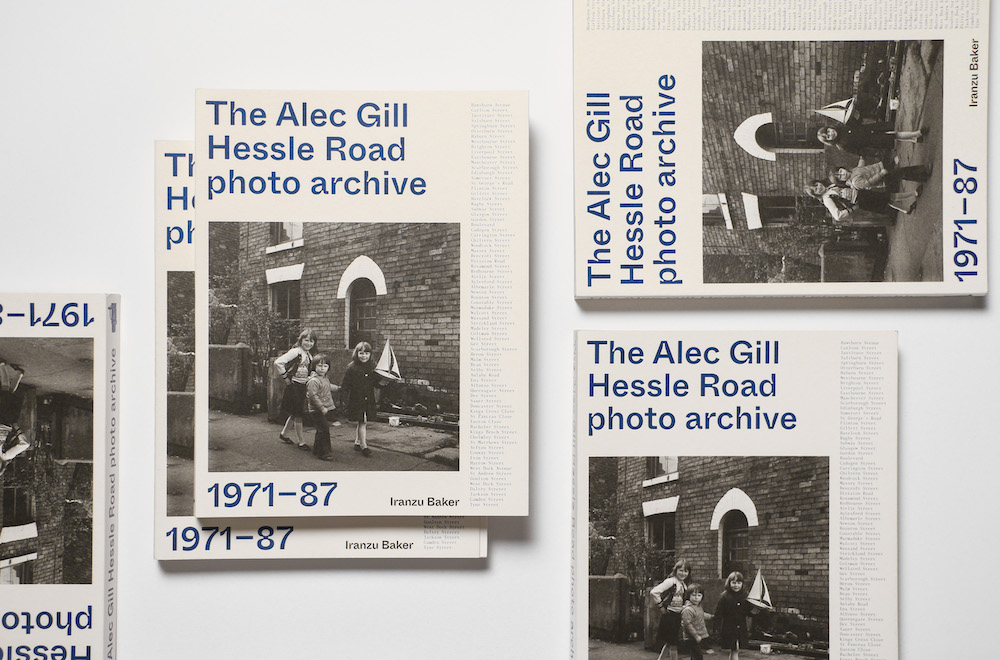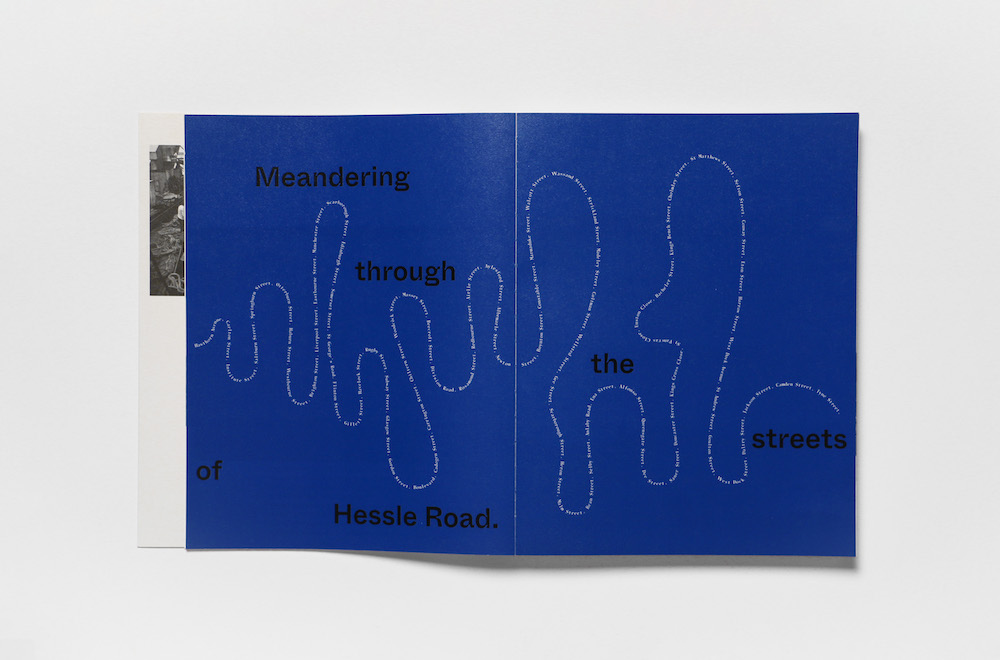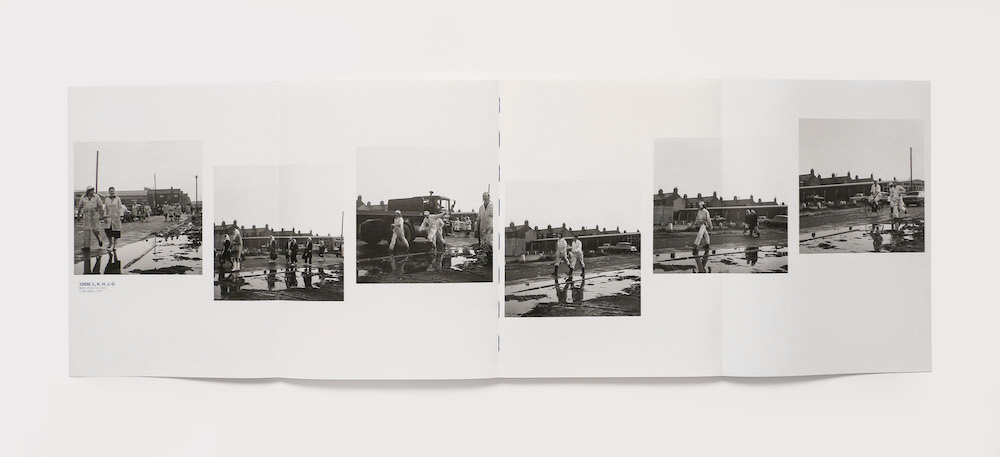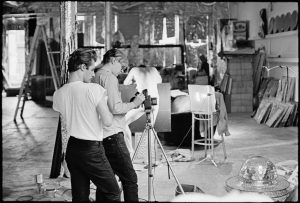Iranzu Baker discusses the new book that celebrates the Hull historian and photographer’s landmark community project

In 1967, Alec Gill quit his freight forwarding job and decided to hitch-hike to Malta. Waiting for a ferry in Sicily, he was drawn to the dockside and began photographing the local fishermen. It suddenly dawned on him that he had never photographed the fishermen in Hull, the port where he was born and bred. Why not focus on his own community, turn his lens to home? A handful of years after his return, he drew up a boundary map with Hull’s Hessle Road at its heart and began shooting the working-class neighbourhood and its inhabitants, never wavering outside this line over the course of nearly two decades.
Amassing an archive of nearly 7,000 black-and-white images – a boy and his dog throwing a fishing line out, old dears on benches, cats in prams, laundry lines, factory workers finishing a shift with a grin – their intimacy is a testament to Gill’s keen eye and interpersonal skills, as well as his choice of equipment. Using a Rolleicord twin-lens reflex camera meant he didn’t need to look through a viewfinder and could therefore hold it at waist level and chat with his subjects. This ultimately breeds a warmth and immediacy often missing from documentary photography.
If Gill captures the domestic and labour through a social lens, he also highlights its inherent political element. Photographs of street protests against The Housing Act of 1969 sit alongside snapshots of a fishing industry in decline, highlighting some of seismic problems Hull faced throughout the 70s and 80s. However, running through Gill’s photos like a stick of rock are wry smiles and mischievous glints, a resilience and joy in the face of change.

Following a successful Kickstarter, a comprehensive selection from the archive (and previously unseen work) has just been published in a book edited by writer and archivist Iranzu Baker, and beautifully designed by Fran Méndez. To celebrate its launch, an exhibition and event with Gill at the Stephen Lawrence Gallery, Greenwich, takes place on the 18th May, 6pm.
We spoke to Baker about the impetus for the project, its intuitive selection process, and the timeless poignancy of community spirit.

What can you tell me about Alec Gill as a person, and what was the impetus for him doing this enormous project?
Alec is endlessly curious, extremely determined and dedicated. When he started documenting the Hessle Roaders in the early 1970s, I don’t think he realised how long it would go on for or that it would essentially become his life’s work 50 years down the line. He was a budding academic who was deeply interested in people and would go on to study a degree in psychology.
One of the reasons Alec first became interested in documenting the Hessle Road community was because of its lack of suitable play areas. Kids had no option but to play in between traffic on the street. The way young generations adapted to their environment became the main focus of his study in its early stages. In 1977 – when it was announced that a large area of the community was to be demolished – Alec was determined to extend his project to include other characteristics of Hessle Road life. His idea was to show the parallel process of the demolition of the fishing neighbourhood and the decline of its industry (due, in part, to the Cod Wars in 1958, 1972 and 1975). He wanted to capture it before a part of British memory was to be destroyed forever.
Taking photographs of his native Hull became a way of connecting with and understanding people on a human level. He often talks about how he loves the underdogs in society. For him, the Hessle Roaders were the underdogs of Hull and he wanted to make sure their existence and stories were given some attention.

Likewise, what first drew you to his work and made you want to pursue and publish this book?
The photographs were taken in my hometown so that was a huge initial pull factor for me. I felt a close connection to them from the outset. There was also something refreshing about the way in which the place I’d grown up was being portrayed in the images. I’d never seen it presented in such a way before. I suppose I was drawn to that contrast of warmth and hope in the face of turmoil. Alec had exhibited his photographs several times over the years, but the short lifespan of a show – as opposed to the longevity of a book – was also part of the reason for this project. The way we engage with and experience an exhibition is also different and hopefully this publication allows for a reframing of the work in the context of the printed page.

As a curator and editor, what was the process for selecting the photographs, given that Gill’s archive totals nearly 7,000 images? What were you looking for and what stories did you want to draw out?
The process started with me looking through printed contact sheets and negatives of the collection to confirm what I felt was worth pursuing for the book. I tried to be intuitive about the selection but I started out looking for images that communicated a sense of community. Alec often talks about how close-knit the neighbourhood was. I started to find other visual elements that I was naturally drawn to such as gestures, symmetry and the dressed self. Frozen movement kept coming up too and I loved the spontaneity of that. I was looking for day-to-day moments and trying to sequence them in a fluid way. The more I think about it, the more I realise that the sequencing happened at the same time as I made the image selection. I would play around with how I envisioned them on the page while I was making the image edit. I knew I didn’t want to categorise all of the photographs into themes. There are some themed sections but the main body of the book was intuitively formulated in reference to Alec’s approach to the physical act of taking photographs. His working practice was free: he would wander the neighbourhood with no fixed plan other than to stop if he saw something intriguing enough to capture. For a more dynamic reading experience to reflect the different types of moments Alec encountered, the images are not presented chronologically and don’t cover every year or month of the study.

Although the focus is creatively narrow and specific (a boundary map Gill stuck to religiously), what wider story does it tell about Britain and the changes it was undergoing throughout the 70s and 80s? I am interested in how it manages to speak to both micro and macro decline and perseverance.
The most fascinating aspect for me was actually the fact that the photographs were taken in the same vicinity for such a long period of time! I was curious to know more about the person behind the camera and to see the changing landscape in the photographs. The work does speak to what was happening in other parts of the country at the time. Hull wasn’t the only place that was going through mass housing demolition. As a result of The Housing Act 1969, which provided grants to local authorities, lots of buildings were subject to compulsory purchase orders. Residents across Britain were left with no option but to give up their homes to local councils and move on before the buildings were often demolished. The Cod Wars also affected the whole of the UK’s fishing industry and other port cities across Britain.

Why was Hessle Road important and ultimately chosen?
Up until the 1970s, Hull’s port and Hessle Road area was a bustling and unique part of the city where fishing families lived and worked. With the isolation of their homes at one end of the town, the community was segregated socially and geographically from the rest of Hull. This disconnection gave the place its very own character and culture. Alec saw them as the underdogs of the city and wanted to shine a light on them and tell their story.

There’s a great deal of joy, resilience and hope in the photographs, what are you hoping readers take away from this snapshot of a community?
I hope the book communicates the way in which Alec’s photographs tap into the ever-hopeful attitude of Hessle Roaders, despite the chaotic situation they found themselves in. I would invite readers to be active in creating meaning, given that there is never a correct way to read or interpret a photograph. I would hope readers see a photographic record full of texture which gets to the very core of who we are as human beings.
Between 2019 and 2020, as we revisited the archive in preparation for the book, the body of work took on a new meaning. Against the backdrop of the COVID-19 pandemic and the dramatic changes that the whole world was experiencing, we noticed that the way we were responding to the photographs had shifted. The notion of community spirit Alec tried to capture in his work suddenly felt more visible and poignant than ever. It seemed to further emphasise the contemporary relevance of archives. As the world changes, so too does the way we interpret historical records, including photography, and this allows us to start new conversations.




